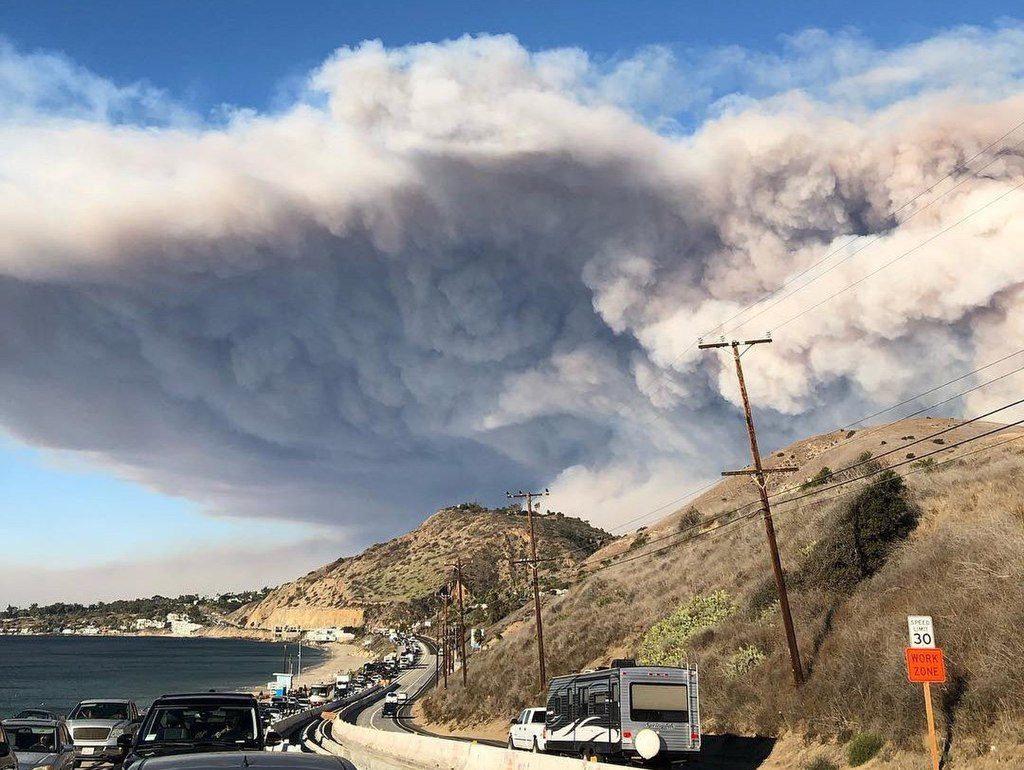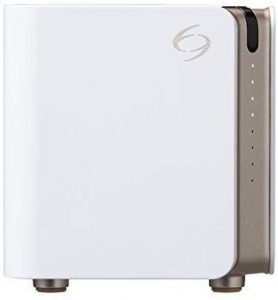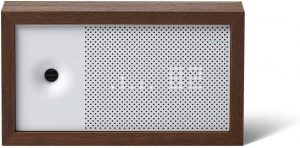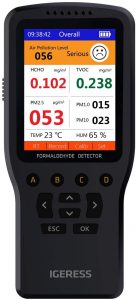Air quality monitors can detect and measure multiple air-borne contaminants frequently found indoors, offering a glimpse into the quality of the air you breathe in every single day. Wildfire smoke, smog, furniture off-gassing, and even just cooking can all contribute to unhealthy indoor air quality.
Air quality monitors allow you to place a number on the air quality in your own home. Once you know what’s in your air, you can take steps to fix it.
We’ve chosen the top air quality monitors for your home or office.
Top 3 Best Air Quality Monitors for 2021
- Airmon Palm Size Air Quality Monitor: Best Price Air Quality Monitor
- Awair Air Quality Monitor: Best Air Quality Monitor for Connected Homes
- IGERESS Air Quality Monitor: Most Durable Air Quality Monitor
When choosing the best air quality monitors, we assessed the functionality of each product first. What contaminants do they measure? Do they include a Bluetooth app? Can you track your air quality. For how long? Next, we looked at customer reviews for insight into value and durability. Last, we looked at cost, ruling out any that didn’t offer a good balance between cost and features.
Read on to read our reviews and to compare our top 5 picks for the best air quality monitors for sale in 2021.
Air Quality Monitor Reviews
Let’s take a look at each of these products to discuss the features that set them apart, as well as their drawbacks.
Airmon Palm Size Air Quality Monitor
Best Price Air Quality Monitor
Quick Look: Extremely well-priced, portable, and detects VOC’s and particulates, but you must manually take each sample.
The Airmon Palm Size is the most budget-friendly air quality monitor on our whole list. In fact, it comes in at a third of the cost or less than any of the others!
While the device works well, at this price you’re not going to get the functionality of the others. The Airmon measures PM2.5 and PM10 (small and large particulates), as well as temperature and humidity. As such, you’re getting the basic data points you need if you live in an area prone to wildfires (we’re looking at you, California).
The aesthetics of the monitor are extremely modern and simple. It’s just a small 2.5” x 2.5” plastic box that weighs just 5 ounces. Like the Atmotube Pro, our top pick for most portable device, there’s no screen, so you have to use the included app to read your pollution levels and track your history.
In fact, this device is very similar to the Atmotube Pro, which comes in about 4x the price. If you want a portable air monitor without the high cost, definitely consider the Airmon here. However, it suffers from a few distinct drawbacks. First, it only measures particulates, while the Atmotube measures particulates and VOCs. Second, the Atmotube automatically takes ‘samples’ every 2-10 seconds. With the Airmon, you have to manually take a sample, which takes about 15 seconds each time.
The manufacturer notes that the sensors are made by Japanese electronics giant SHARP, so you’re very likely getting quality components inside. Indeed, users report that the device is incredibly easy to use, long lasting, and accurate. They also note the app is cute, if a bit simplistic.
Bottom Line: If all you’re looking for is a measure of particulate emissions, this is the perfect option. It’s low cost, great quality, and easy to use. And you can easily drop it in a bag and take it with you on trips.
Learn More & Buy Now at AmazonAwair Air Quality Monitor
Best Smart Air Quality Monitor for Connected Homes
Quick Look: Great for smart homes. Appealing design, app included, tests particulates, VOCs, and CO2. Compatible with Google Home, Amazon Echo, and Nest.
If this was high school, Awair’s Air Quality Monitor would win the award for both Smartest and Most Attractive. Unlike any of the other monitors on our list, the Awair’s mid-mod aesthetic brings a touch of sophistication to any living or bedroom – something we didn’t expect from an air quality monitor.
On top of the aesthetics, the Awair monitor tracks PM2.5, VOCs, CO2, humidity, and temperature. A notable omission in this list is HCHO (aka formaldehyde), which many of the others on our list – like the IGERESS or YVELINES monitors – track.
With the Awair monitor, you’re entering the smart-home department. It’s compatible with Google Home, Amazon Echo, and Nest and gives you personalized tips for cleaner, healthier air.
The actual physical monitor provides little data, instead offering a simple three-level system of dots to provide a glimpse into the amount of airborne contaminants around you (see the picture above). However, the Awair app allows you to dig into the data a bit more, tracking the levels of the five data points (PM2.5, VOC, CO2, humidity, and temp) over time.
While customer reviews for the monitor are generally good, many users seem to have accuracy issues with the latest version. Some report that temperature, particulate, and the 0-100 ‘air quality score’ don’t match the output from other monitors or the environmental situation. Many users suffering through the California wildfire scourge – obviously with extremely poor air quality – reported that their Awair Air Quality Monitor reported the air quality as quite good – even as the county warned against performing exercise indoors!
Bottom Line: The Awair Air Quality Monitor offers excellent aesthetics and decent customer reviews, as well as a useful app. But without HCHO detecting, it doesn’t offer quite as much functionality as other on our list. On top of that, quality control seems hit and miss for the latest version.
Learn More & Buy Now at AmazonIGERESS Air Quality Monitor
Most Durable Air Quality Monitor
Quick Look: Tough and durable with a 2-year warranty and a full-color LCD screen. Detects particulates, HCHO, and VOCs.
The IGERESS Air Quality Monitor takes the cake for durability, as it comes with a 2-year warranty – twice as long as any of the others on our list. If you’re worried about long-term functionality, this is a great option.
Despite it’s mid-price point, the IGERESS tracks the same pollutants as any of the higher priced options. It monitors HCHO (formaldehyde), VOCs, PM2.5, PM1, and PM10 (small, medium, and large particulates), as well as humidity and temperature. However, the lack of any CO2 monitoring is a minor omission that other monitors include. The device also provides a general “Air Pollution Level” with a simple grading system (Fresh, Serious, or Danger) so you can quickly get a feel for your air quality.
The screen is easy to read, with full-color LCD. The unit provides real-time testing, though one user noted there is a 2 to 3 second lag as the air moves through the sensor. For the most accurate readings, you’ll also need to calibrate the device before each use, which takes about 15 minutes, during which time you just leave it alone.
While the data points are thorough, the IGERESS does have a few drawbacks. It’s only able to store 24 hours of data, so it can’t perform any long-term analysis. You’ll need a spreadsheet if you want to chart your historical air pollution levels.
Next, the usabiility isn’t tailored to US homeowners, as temperature is measured in Celcius and the device uses military time (ie 24-hour clock). This doesn’t affect the quality of the readings, but it’s a slight annoyance for most of us.
Users also report that the device needs to be upright for the proper airflow, but it can’t stand on its own – another minor annoyance. However, one user solved the problem by simply placing it in a mug – a quick fix, but one that shouldn’t need to exist.
Bottom Line: The IGERESS Air Quality Monitor offers the longest warranty of any monitor on our list, but there’s a few key drawbacks to be aware of. It detects the most important pollutants – PM2.5 and HCHO – as well as VOCs, temperature, and humidity. But it does have a few notable omissions, including CO2 detection and a way to chart long-term contaminant levels.
Learn More & Buy Now at AmazonWhat You Need to Know About Air Quality Monitors

In wildfire-prone areas like California, the particulate matter in smoke – contaminants that can be inhaled into the lungs – is one of the most serious airborne threats. Clean air typically has about 15 micrograms of particulate matter per cubic meter of air, during wildfires that can jump to 200 or more – far beyond any healthy level. Particulates in smoke commonly causes itchy eyes and coughing, but dense smoke or prolonged exposure can lead to more serious respiratory issues, as well as heart failure and even stroke.
As California’s population continues to grow, the health effects of wildfires on local populations is growing as well. 2018 was the deadliest season for wildfires in California’s history, burning 1.9 million acres of land. Fires close to heavily populated areas, like the Woolsey Fire north of Los Angeles, led to the evacuation of 295,000 people and sent plumes of smoke into the air (as you can see in the featured image above). Since the 1960s, wildfires have continued to burn more and more land each year. As climate change soldiers on, wildfires – as well as their disastrous health effects – are expected to continue increasing.
Here’s a few tips and thoughts to get the most from your air quality monitor.
Are air quality monitors actually useful?
If you’re worried about the air quality in your home, office, or car, air quality monitors offer a simple, easy way to find out just how clean (or dirty) your air is, and what contaminants your area contains.
Most air quality monitors can detect, at the very least, particulate emissions, while the higher-end monitors also measure formaldehyde and other VOCs, as well as CO2, temperature and humidity.
A study from the California’s Lawrence Berkeley National Lab assessed 267 pollutants and found that particulates and formaldehyde are two of the three most dangerous pollutants in the house. Health impacts range from respiratory issues like asthma, lung disease, and lung infection, all the way up to heart failure. Chronic exposure to particulates in particular can lead to chronic bronchitis, stroke, and even death.
Of course, once you know exactly what contaminants your air contains, you can take steps to fix the issue. These could include simple, no-cost steps like regularly opening windows or using your cooking vent, to bigger options like purchasing an exhaust fan or portable air purifier.
What substances do air quality monitors monitor?
Almost all air quality monitors, at the very least, will test the level of small particulates (PM2.5) in the air. That’s good news, as they are the most harmful substances. As you move up in price, you’ll see a few more data points.
Here’s a full list of pollutants that air quality monitors will keep track of:
- Particulate matter: Particulates are a mix of solid and liquid contaminants suspended in the air around you. Particulates are so small they can be inhaled into your lungs, leading to heart and health issues. Small particulate matter, known as PM2.5, are the most dangerous and come from both inside and outside the home, through cooking, heating, smoking, and even wildfires. All five of the air quality monitors on our list detect and measure PM2.5 particulates.
- Volatile Organic Compounds (VOCs): VOCs are a group of dangerous chemicals used in our everyday products, like paints, carpets, air fresheners, and even cosmetics. When we bring these products in our homes, they off-gas VOCs into the air. Common VOCs include benzene, ethylene glycol, and formaldehyde (see below). Short-term inhalation of VOCs can lead to throat irritation and headaches, while chronic exposure can lead to cancer and damage to the central nervous system. The YVELINES, Awair, Atmotube, and IGERESS air monitors above all detect VOC levels in the air.
- Formaldehyde (HCHO): Formaldehyde is a specific VOC. It’s separate from other VOCs because it specifically is one of the most dangerous contaminants in your home. Smoking is the greatest source of formaldehyde, though manufactured wood products – like cabinets, laminated flooring, and furniture with particleboard – also off-gas formaldehyde. Fabrics, paints, glues, and even detergents can also give off formaldehyde. The YVELINES and IGERESS air quality monitors above both specifically detect HCHO.
- Carbon Dioxide (CO2): While CO2 is naturally occuring, in a poorly-ventilated building with lots of people, CO2 gases can potentially build up, leading to heachaches and dizziness to coma or asphyxia in more serious situations. Not all air quality monitors detect CO2 levels. The YVELINES and Awair air monitors above both detect CO2 levels.
Air quality monitors also provide other data, including:
- Temperature & Humidity: High humidity and temperature speed up the release of formaldehyde, so these two data points are crucial for understanding the quality of the air around you.
- Air Quality Estimate: Most monitors will take all the data points they collect, then provide a basic score – good, average, poor, for example – based on information collected. This provides a quick look into your air quality and if you want to dive into the details, most provide specifics for each contaminant as well.
What should I do if the device registers a warning?
Air quality monitors help you know what’s in your air. But if your monitor does detect an unhealthy amount of a certain contaminant in your air, what do you do then?
To a certain extent, it depends on the specific contaminant, but the EPA notes that the easiest way to improve your air quality – no matter what results are showing up – is to simply replace your contaminated, indoor air with fresh, outdoor air. Of course, the easiest way to do this is to open the windows or turn on your HVAC system.
If you don’t want to use your whole-home heating or cooling system, portable air purifiers can clean the air in a single room. No matter what system you’re using you’ll want a HEPA filter, which can filter out small particulates. The EPA says that portable air cleaners can reduce indoor particulates by as much as 85%, so if you live in a wildfire-prone area or just want cleaner air, they are an easy, low-cost option.
For gases (like formaldehyde), you’ll need a filter with activated carbon or something similar that is designed to remove gases. Of course, a HEPA filter that contains activated carbon can filter both particulate matter and gases, so they are a great option for both portable air purifiers and whole-home central heating and cooling systems. For more information on filter types and sizing your air purifier, check out the EPA’s excellent Guide to Air Cleaners in the Home.
If you live in a wildfire-prone area, like so much of the western and eastern US, simply pulling in fresh, clean outdoor air may not be an option. Smoke is considered PM2.5 particulate matter, which you can easily inhale and can lead to respiratory issues like bronchitis. If you’re caught in a wildfire, the EPA recommends more drastic steps during the emergency:
- Stay inside and keep the doors and windows closed. If your HVAC system has a fresh air intake, figure out how to close it off or only recirculate the inside air.
- Create a ‘clean room’ with no windows or fireplace, and use a portable air purifier with a HEPA filter.
- Purchase N95 respirators and know how to use them.
For day-to-day life when wildfires aren’t raging, there are no- to low-cost solutions to drive down contaminants. If your particulate levels are higher than normal, the EPA advises homeowners to:
- Change filters on your central heating and cooling system, as well as air purifiers
- Have a professional inspect and tune-up your heating system
- Vent all natural-gas or propane appliances – like stoves and furnaces – to the outside
- Install exhaust fans that vent outside for cooking
Unlike particulates, formaldehyde is typically caused by items in your own home, like furniture and wall paint. The CDC says all homes have small amounts of formaldehyde, but if your levels are higher than they should be, you can reduce your levels by opening your windows for a short time each day, installing exhaust fans, and lowering your humidity and temperature levels as much as possible to impede off-gassing.
Also, look for furniture and wood products that meet ultra-low emitting formaldehyde (ULEF) or non-added formaldehyde (NAF) requirements. And of course, quit smoking inside!
Conclusion
The best air quality monitors offer an easy, low-cost way to ensure you’re living in a safe, healthy home. If you want the freshest, cleanest air in your home or office, it all starts with an air quality monitor. Once you know what’s in your air, you can take the appropriate steps to solve the problem.
Compare The Top 3 Best Air Quality Monitors for 2021
- Airmon Palm Size Air Quality Monitor: Best Price Air Quality Monitor
- Awair Air Quality Monitor: Best Air Quality Monitor for Connected Homes
- IGERESS Air Quality Monitor: Most Durable Air Quality Monitor


